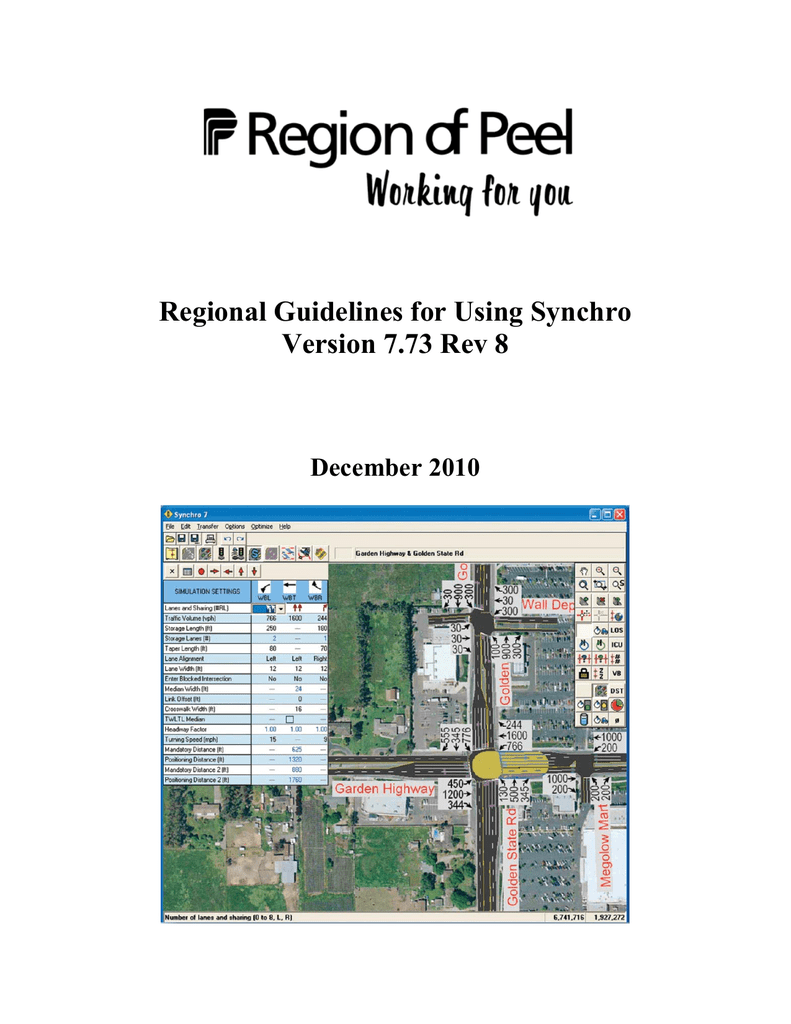Synchro Simtraffic Manual
The Synchro® Studio suite of products provides the best in traffic analysis, optimization, and simulation applications. The package combines the modeling capabilities of Synchro and the micro-simulation and animation capabilities of SimTraffic® with our 3D viewer to create the ultimate tool kit for any traffic engineer. Synchro is a macroscopic analysis and optimization software application. Synchro supports the Highway Capacity Manual’s (HCM) 6th Edition, 2010 and 2000 for signalized intersections, unsignalized intersections and roundabouts.

Synchro also implements the Intersection Capacity Utilization method for determining intersection capacity. Synchro’s signal optimization routine allows the user to weight specific phases, thus providing users more options when developing signal timing plans. Because the software is easy to use, traffic engineers are modeling within days, thus adding to the number of reasons why Synchro remains the leading traffic analysis application. SimTraffic is a powerful, easy-to-use traffic simulation software application. SimTraffic performs micro-simulation and animation of vehicular and pedestrian-related traffic. With SimTraffic, individual vehicles are modeled and displayed traversing a street network.
SimTraffic models signalized and unsignalized intersections, as well as freeway sections with cars, trucks, pedestrians, and buses. Unlike a number of other modeling applications, SimTraffic animation is displayed while the simulation is performed. Data entry is intuitive and efficient. With a single mouse click, any data set created with Synchro can be used to run simulations within SimTraffic. Within 3D Viewer, users may utilize supplied models within the viewer’s library or add their own.3ds models to customize their scene. It is as close to reality as you can get without standing in the middle of an intersection. TripGen, originally developed by Microtrans, is a simple, easy-to-use tool that calculates trip generation based on Version 9 of the Institution of Transportation Engineer’s Trip Generation Manual.
Solutions manual data communications and networking 5th. The analyst can select the desired independent variable and then calculate driveway volumes by using the rates or equations found in the Trip Generation Manual. Pass-by trips and internal capture trips for mixed-use developments (NCHRP 684) can also be taken into account. The software allows users to enter custom trip rates based on local or regional studies. Several reports are available for users to quickly review calculations.
Future versions of the software will be integrated with Synchro, thus significantly reducing the time required to analyze traffic impacts. The SimTraffic Controller Interface Device, or CID, is a link between the SimTraffic controller interface software and a traffic signal controller. The link between software and hardware is known as real-time, hardware-in-the-loop simulation. This simulation allows the analyst to use actual signal controller hardware to fine-tune a traffic signal timing plan. The CID’s hardware-in-the-loop simulation also allows the analyst to test the features of the signal controller from the convenience of the office, rather than out in the field. The intersection capacity utilization (ICU) method is more precise and less subject to manipulation, and is intended to be used in planning applications, such as future roadway design and site impact studies. The ICU objective function is volume-to-capacity ratios, rather than delay; it is designed to measure the true capacity of an intersection.


The ICU is designed to be used in conjunction with delay-based methods, such as Synchro and those in the Highway Capacity Manual, to give an overall picture of intersection performance. Trafficware publishes Intersection Capacity Utilization—Evaluation Procedures for Intersections and Interchanges, 2003 Edition, as a reference book. The 2003 Edition includes improved modeling of permitted left turns from shared lanes.
Synchro Simtraffic Manual
The edition also contains new methodologies for analyzing diamond interchanges and single-point urban interchanges(SPUIs).
Comments are closed.